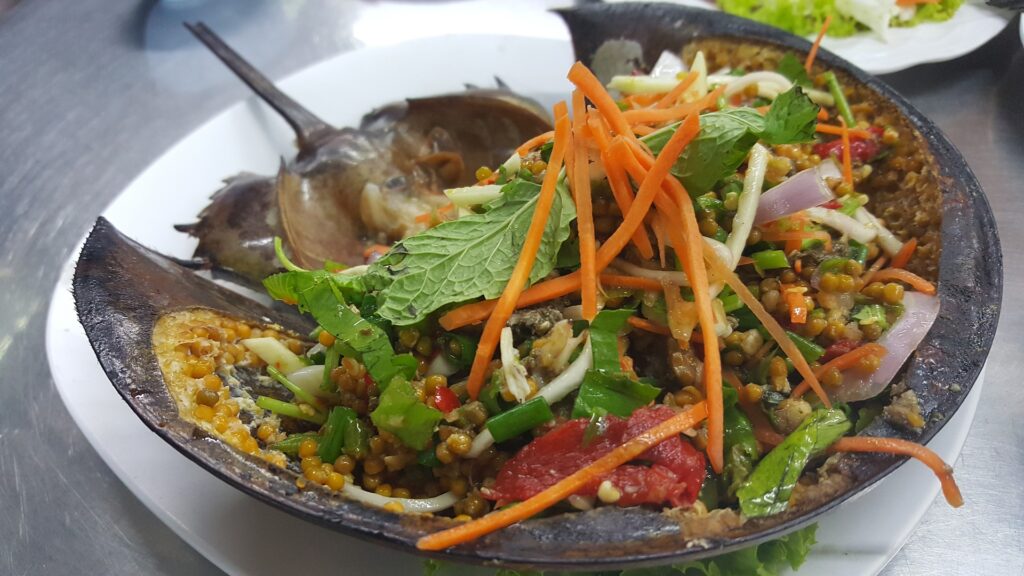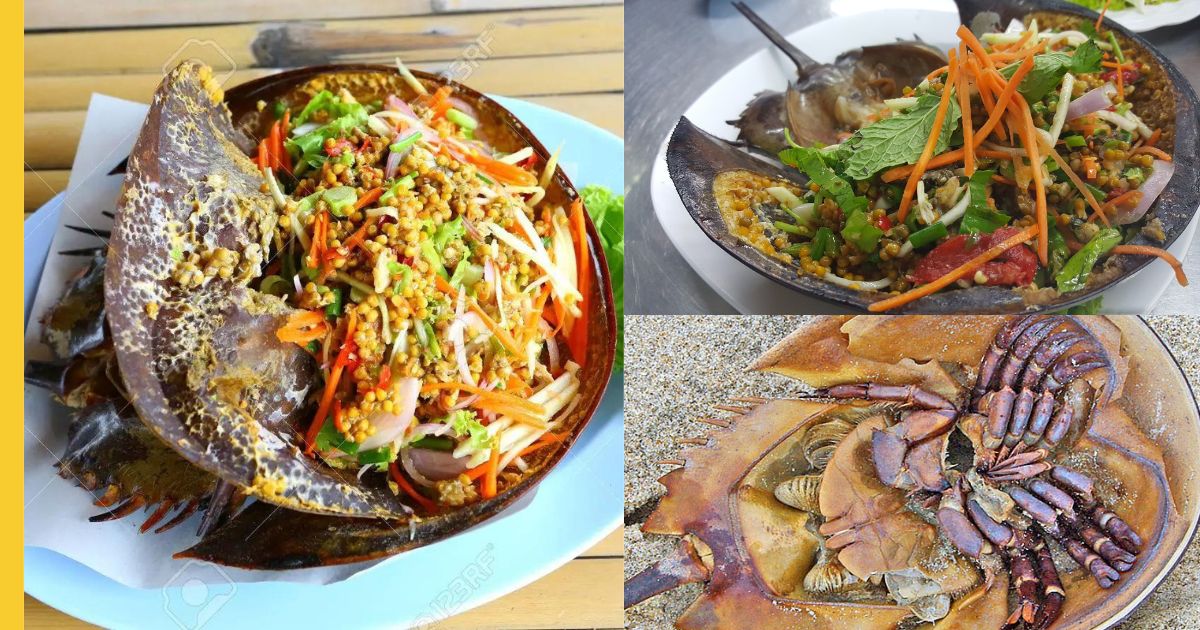In Malaysia, one dish that has gained a lot of attention in recent years is the horseshoe crab dish. This dish, made from the eggs of the horseshoe crab, is a delicacy that is known for its unique flavour and texture. However, the dish has also become controversial, as it raises questions about the sustainability of harvesting horseshoe crabs.
What is a Horseshoe Crab?
Before we delve into the horseshoe crab dish, let’s take a closer look at this interesting creature. The horseshoe crab is not actually a crab, but a distant relative of spiders and scorpions. It has a hard shell and a long, pointed tail, which it uses to navigate in the shallow waters where it lives.

Horseshoe Crab Dish: How is it Made?
The horseshoe crab dish is made from the eggs of the female horseshoe crab. The eggs are harvested by local fishermen during the breeding season, which occurs between March and June each year. The eggs are then cleaned and boiled, and served with a variety of dipping sauces.
The Flavor and Texture of Horseshoe Crab Eggs
Those who have tried the horseshoe crab dish describe the flavour as being similar to that of lobster or shrimp, with a slightly salty taste. The texture of the eggs is soft and creamy, with a slightly grainy texture.

Controversy Surrounding Horseshoe Crab Harvesting
While the horseshoe crab dish may be popular among some Malaysians, it has also become a controversial issue due to concerns about the sustainability of harvesting horseshoe crabs. Horseshoe crabs are not actually crabs, but are more closely related to spiders and scorpions. They play a crucial role in the ecosystem as they are an important food source for migratory birds and other marine creatures. In addition, their blue blood contains a substance called Limulus amebocyte lysate (LAL), which is used to detect bacterial toxins in vaccines and medical devices.
As a result, the horseshoe crab population has been declining in recent years, and there are concerns that the harvesting of horseshoe crab eggs for the horseshoe crab dish could further threaten their survival.
Sustainability Efforts
To address these concerns, the Malaysian government has introduced measures to regulate the harvesting of horseshoe crab eggs. These measures include limiting the number of horseshoe crabs that can be harvested each year, and implementing strict guidelines for the harvesting process to ensure that the crabs are not harmed in the process.

Conclusion
The horseshoe crab dish is a unique delicacy in Malaysia that has gained both popularity and controversy. While the dish is known for its unique flavour and texture, there are concerns about the sustainability of harvesting horseshoe crabs. With the introduction of regulations to protect the horseshoe crab population, it is hoped that the horseshoe crab dish can continue to be enjoyed while also ensuring the preservation of these important creatures in the ecosystem.
Article curated by Lavanyah Magenthiran




